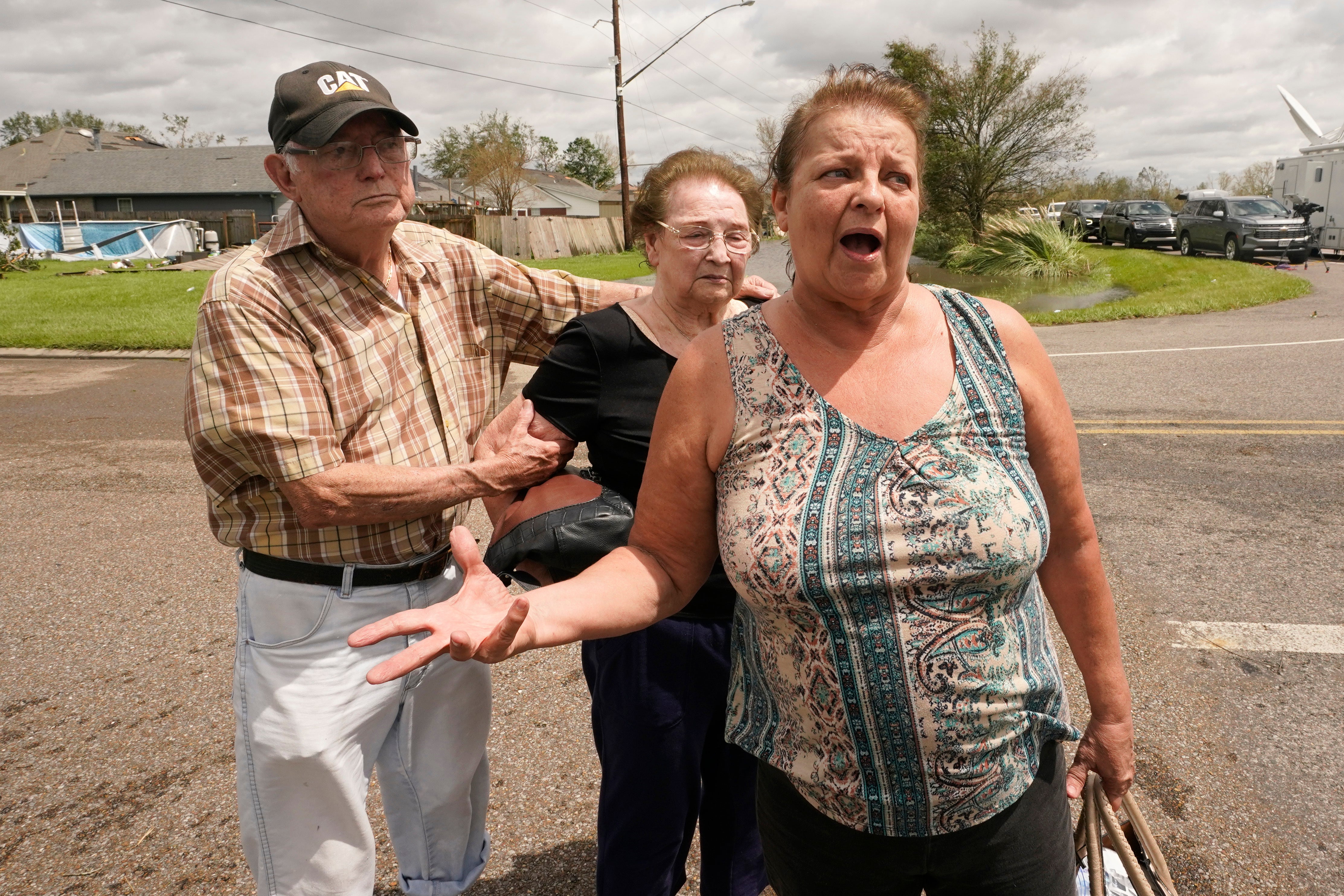Ida inundates areas around New Orleans while sparing city
New Orleans largely escaped catastrophic flooding during Hurricane Ida, but nearby communities were not so lucky

Debbie Greco and her family cowered on a stairway landing as Hurricane Ida sent 4 feet (1.2 meters) of muddy water rushing into her home in LaPlace along the west side of Lake Pontchartrain.
She and her son had safely rescued her elderly parents from their home down the street Sunday. But now they prayed the roof would not collapse on all of them.
“God blessed us that we all survived,” she said Monday after they were rescued by boat.
While New Orleans largely escaped catastrophic flooding during the storm, LaPlace and other nearby communities were not so lucky.
In LaPlace, Ida tore roofs off homes and flooded entire subdivisions. Residents retreated to their second floors or attics and took to social media to plead for boat rescues as the water rose.
That assistance came on Monday, when rescue trucks and boats on trailers took people to safety. Other residents got to dry ground by wading through knee-deep water carrying pets and other belongings.
Dozens of people pulled pieces of chimneys, gutters and other parts of their homes to the curb.
“My dreams are destroyed," said John Vincent, 65, another LaPlace resident. "I mean, at my age I’ve got to start all over.”
New Orleans' levee system — overhauled at a cost of billions of dollars after Hurricane Katrina breached it — held up against Ida's rampage. Ida struck on the 16th anniversary of Katrina, which devastated the city and was blamed for 1,800 deaths in 2005.
But in LaPlace, work only recently began on a long-awaited levee project that isn't expected to be completed until 2024.
The working-class city of close to 30,000 people sits between the Mississippi River and Lake Pontchartrain, a 640-square mile (1,658-square kilometer) estuary. It’s part of a stretch of communities along the river between metro New Orleans and Baton Rouge that is home to major chemical companies and refineries.
Flooding also devastated the community of Crown Point about 17 miles (27km) south of New Orleans, where rescue crews deployed high-water trucks and swamp boats. Wayne Templet got friends and pets in the area to safety in his truck and said the storm was “adding stress to an already stressful life.”
In Lafitte, a small community south of Crown Point, even homes on stilts were flooded and residents had to use boats to navigate the submerged streets and retrieve their belongings. And in Houma, a city of about 30,000 people southwest of New Orleans, Ida's winds had stripped the roofs off of businesses, apartment complexes and single-family homes.
Louisiana Gov. John Bel Edwards said Monday the Louisiana National Guard alone rescued 191 people across St. John the Baptist, Jefferson and Orleans parishes by boat, helicopter and high-water vehicle. The state would soon transition to a door-to-door search of the hardest-hit areas to determine whether anyone needs assistance, he said.
Many homes that did not flood or suffer other damage were still without electricity, and officials warned it could be weeks before the power grid is repaired.
More than 1 million customers in Louisiana and Mississippi — including all of New Orleans — were left in the dark. Eighteen water systems were also out, impacting more than 312,000 people, and an additional 14 systems affecting another 329,000 people were under boil water advisories, Edwards said.
He urged evacuees not to try to return home, citing the widespread power outages, road closures and other dangerous conditions.
“There are an awful lot of unknowns right now. There are certainly more questions than answers," he said. “I can’t tell you when power is going to be restored. I can’t tell you when all the debris is going to be cleaned up and repairs made and so forth.”
Ida’s 150 mph (230 kph) winds tied it for the fifth-strongest hurricane ever to hit the mainland.
Some residents vowed to rebuild after the storm, but Greco and her father, Fred Carmouche, said they are tired of the constant hurricane fears on the Gulf Coast.
“When I rebuild this I’m out of here. I’m done with Louisiana,” Carmouche, 85, said.
___
Associated Press reporters Stacey Plaisance in Crown Point, David J. Phillip in Lafitte, Kevin McGill in New Orleans and Sudhin Thanawala in Atlanta contributed to this report.